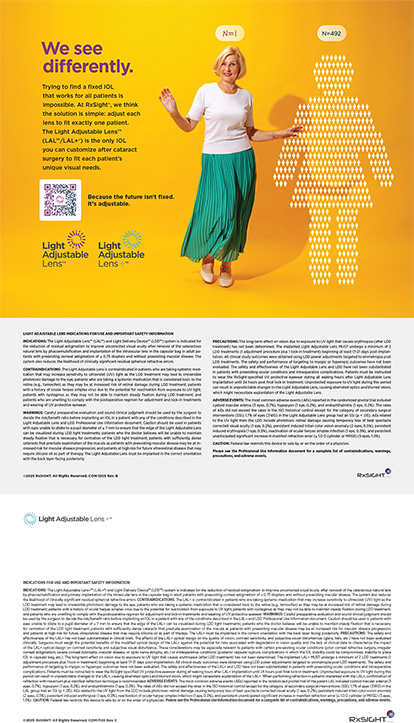Prior to 1993, the most common technique for nuclear disassembly was probably divide and conquer. Surgeons would sculpt four trenches in the nucleus and then crack them apart to create four triangular segments,1 each of which was emulsified and completely removed. This approach worked well and remains popular. In some cases, however, difficulty cracking the posterior plate produces damaging forces on the capsule or zonules. Moreover, sometimes, manipulating a large segment can disrupt the anterior capsule.
In 1993, Nagahara described phaco chop. In this revolutionary procedure, the surgeon sliced the cataract from outside to inside.2 Phaco chop was immediately touted as possibly a safer method, largely because it eliminated outward forces on the capsular bag and zonules. Unfortunately, simply slicing apart the segments did not solve the problem completely. Once released, every bump and hollow on the surface of the nuclear sections interdigitated again, creating a tiny intraocular jigsaw puzzle that locked each segment in place. Sometimes, the first segment came out easily. Other times, it was trapped by the rough contour.
In 1994, I introduced a modification: the stop and chop technique. I would prepare space in the middle of the cataract prior to chopping (prepare, then stop, then chop).3,4
STOP AND CHOP
First Steps
I looked at the cataract as having two layers, the hard and the soft. The inner nucleus is the hard layer, both physically and in terms of the difficulty of emulsification. Conversely, the peripheral nucleus is the soft layer. These designations lend themselves nicely to a strategy: “erase” the hard stuff and then remove the soft stuff.
My technique begins with a large capsulotomy (the easier to remove things through), followed by thorough hydrodissection with rotation to be sure all corticalcapsular adhesions are broken. Next, I erase the center of the cataract. Sculpting gives me a nice sense of how dense the cataract is, how much energy will be required to remove it, and how far out the dense area extends. The key here is to be aggressive, to go out far enough and down very deep. The more of the hard cataract is erased, the easier the rest of the operation becomes.
Next, I chop the nuclear rim into bite-sized pieces. A soft cataract might need to be chopped into three or four pieces, whereas a dense one might be broken into eight or more. I make this determination when erasing the center. “Ah, this one is pretty dense,” I’ll think. “I’ll break it into more pieces.”
Instruments
When I started chopping, I used a straight chopper just inside the capsulotomy. I pressed the chopper into the nucleus and pulled it toward the center of the eye, thereby creating a separation through the rim and extending from the equator to the edge of the erased area. As I became more comfortable and aggressive, I began pressing the chopper against the top of the nucleus and pushing back against the capsule so that the chopper was partway from the capsulotomy to the equator. That made it easier to get a full-length chop.
Later, I developed a chopper (Koch-Minami Chopper; ASICO, Westmont, IL) with multiple curves designed to fit around the equator of the nucleus (Figure 1). For each chop, I press the instrument against the nucleus, push it out until it falls behind the equator, and then pull the chopper toward the center of the nucleus (Figures 2 and 3). These actions produce an immediate and complete separation of the nuclear rim. As before, I perform these steps a number of times—fewer for soft cataracts and more for dense ones (Figure 4).
This is my current technique and is based on my experience and comfort. Many surgeons still chop from just within the capsulotomy using a straight chopper. That remains an effective and established method.
Nuclear Removal
After the rim has been chopped, each segment is free for removal. The segments may flow out into the erased space in the center of the nucleus easily, or I may have to put the chopper behind the nucleus to pull it out. In either case, there is room in the erased zone where I can work safely, away from the iris and the cornea.
CONCLUSION
Chopping is a highly efficient way of disassembling the nucleus for easy removal. Sculpting removes the hard part of the cataract. Then, the surgeon breaks the peripheral rim with a series of chops, each one slicing the rim from outside to inside. Tension on the bag or zonules is thus avoided. Next, he or she emulsifies each segment in the open space created earlier while erasing the center. Except for minor evolutions, I have not changed my primary procedure in almost 20 years.
Paul S. Koch, MD, is the medical director of Koch Eye Associates in Warwick, Rhode Island. He acknowledged no financial interest in the product or company mentioned herein. Dr. Koch may be reached at (401) 738-4800; paulkoch@kocheye.com.
- Gimbel HV.Divide and conquer nucleofractis phacoemulsification:development and variations.J Cataract Refract Surg. 1991;17(3):281-291.
- Nagahara K.Phaco Chop.Film presented at:The Film Festival,ASCRS Symposium on Cataract,IOL and Refractive Surgery;May 8 to 12,1993;Seattle,WA.
- Koch PS, Katzen LE. Stop and chop phacoemulsification. J Cataract Refract Surg. 1994;20(5):566-570.
- Koch PS.Techniques and instruments for cataract surgery.Curr Opin Ophthalmol.1994;5(1):33-39.


